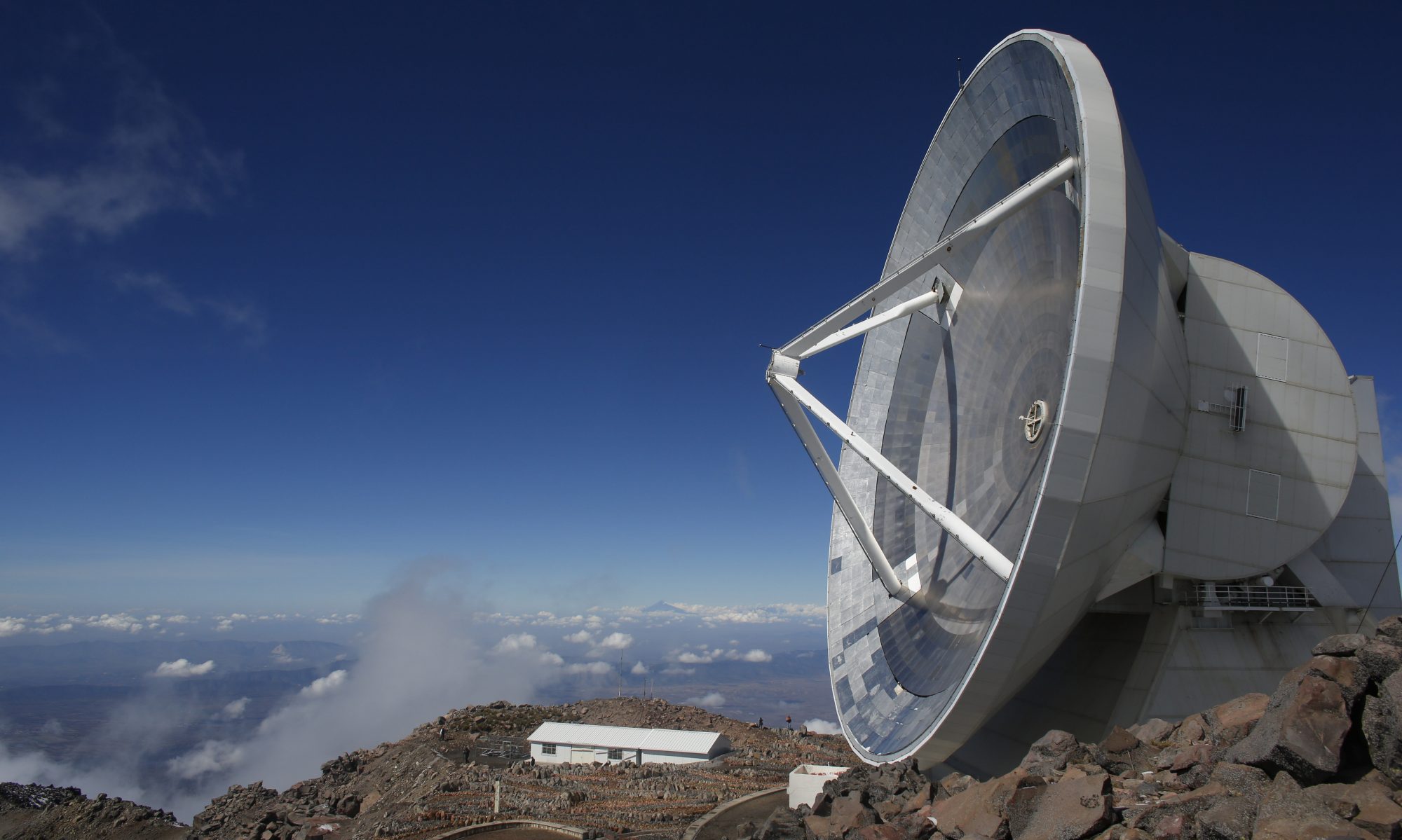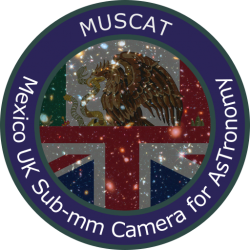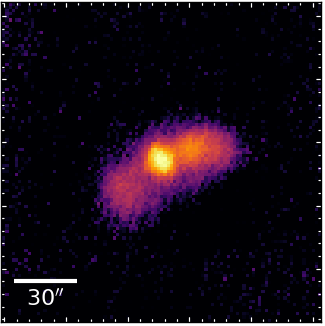
After successfully shipping MUSCAT to the Large Millimeter Telescope (LMT) in mid-2021, the team from INAOE started work to inspect and commission the instrument in November 2021. Preliminary inspection of the instrument reviled that MUSCAT had faired well on its journey to Mexico with only as single RF cable, one of 48 used to read out the detectors, showing signs of damage. After a replacement was installed the team set about removing the various bracing structures that kept MUSCAT safe on it journey.
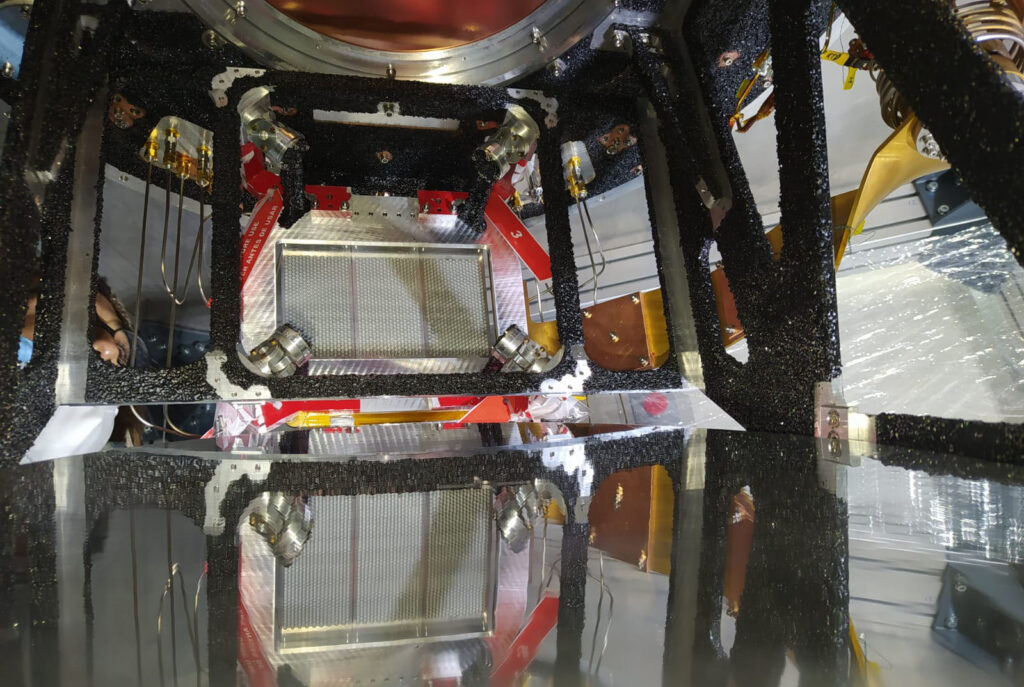
With all the additional shipping structures removed the INAOE team set about preparing MUSCAT for on-sky commissioning observations. With MUSCAT in place and optically connected to the LMT, the system was cooled down over four days to its operating temperature of approximately 120 mK (-273.03°C), the cooldown time and base temperature achieved nicely matched the performance observed during lab-based development in Cardiff.
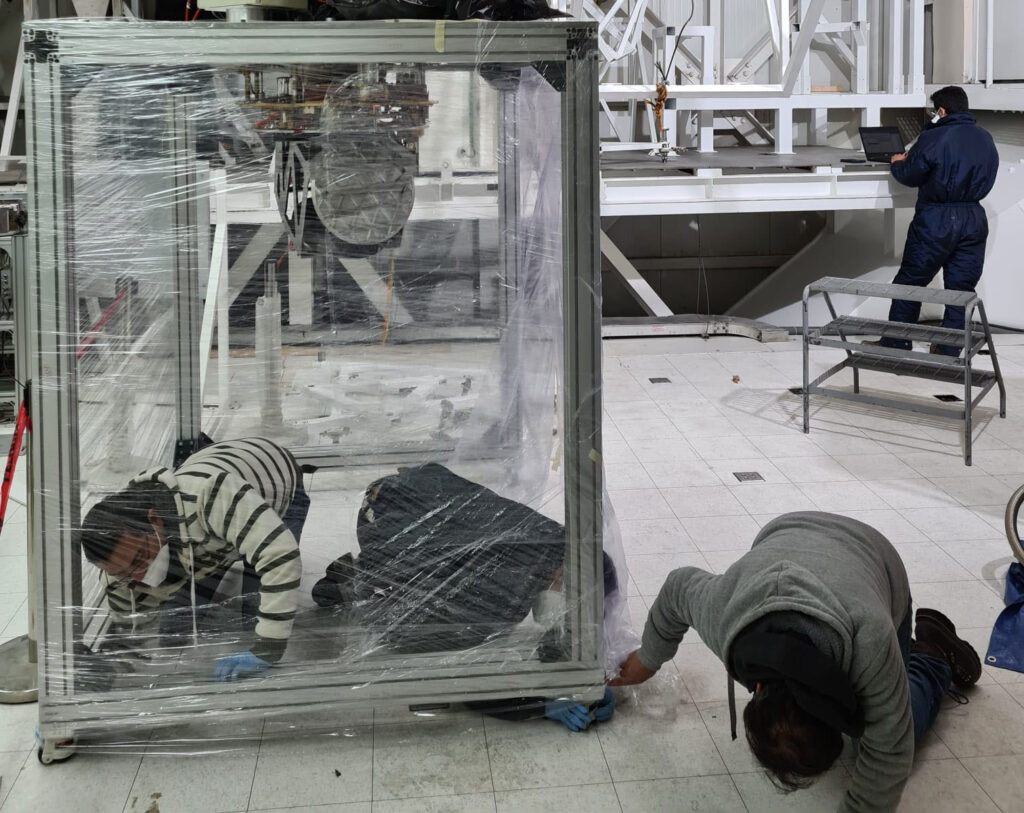
The first preliminary astronomical observations with MUSCAT were carried out just before Christmas 2021 and concentrated on verifying the performance of the MUSCAT optical components when coupled to the LMT and the sensitivity of the detectors during science-grade observations. Using astronomical point sources, the team focused the active primary mirror and secondary surface of the LMT. Maps of these point sources showed that after focusing the telescope, MUSCAT was producing high-quality, circular beams.
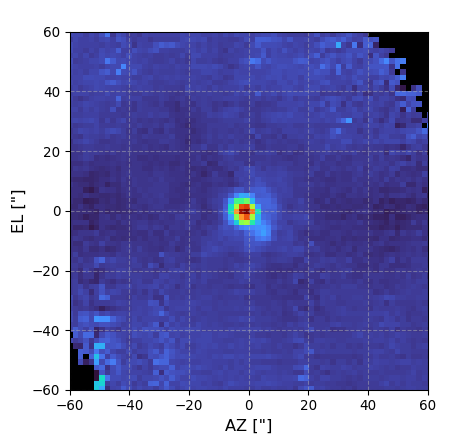
On-sky commissioning to date has concentrated on optimising MUSCAT for observing campaigns, understand which tasks need to be completed regularly during observations and understanding the absolute calibration of the MUSCAT detectors’ response to astronomical signals. However, the MUSCAT team have also taken opportunities to explore the performance of MUSCAT when mapping well known extended structures. An early example of one of these observations is a map of the M87 galaxy (Virgo A). The image below shows the additional information that is revealed by MUSCAT observing at a wavelength of 1 mm compared to the image at optical wavelengths. In MUSCAT’s, for example, image it is possible to see the emissions jets from the active galactic nucleus of M87, which are not visible at optical wavelengths. This illustrates the promising future for MUSCAT carrying out high-resolution follow-up observations of sources identified by other instruments.

The MUSCAT team are working hard to complete to process of commissioning MUSCAT on the LMT and in the coming weeks will continue the work of commissioning the instrument, developing data processing pipelines for science observations and collecting data which will be used in these pipelines.
